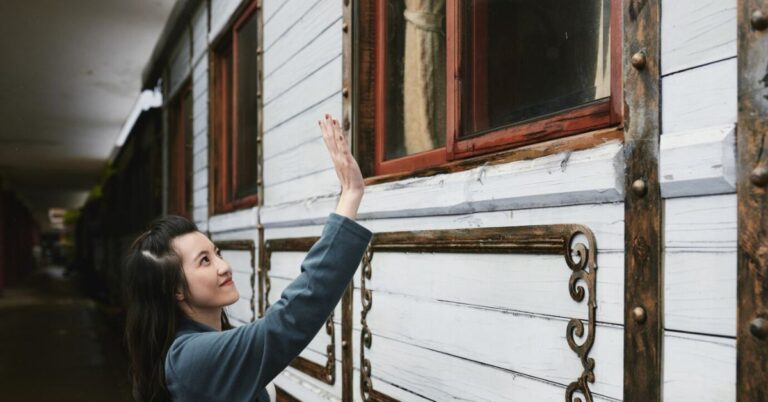Composite cladding has become a favourite among homeowners looking for a stylish, durable, and low-maintenance way to enhance their exteriors. With a range of colours, finishes, and installation styles available, composite cladding can transform any home—whether you prefer a sleek modern look, a classic traditional aesthetic, or a cosy rustic charm.
Let’s explore the best composite cladding ideas tailored to different home styles, helping you choose the perfect design for your property.
Composite Cladding Ideas for Modern Homes
Modern homes are all about clean lines, minimalist design, and a focus on materials that blend function with style.
1. Sleek and Dark-Toned Panels
For a bold and contemporary look, opt for charcoal, black, or dark grey composite cladding. These deep tones create a striking contrast against large glass windows, metal accents, or light-coloured elements.
2. Vertical Cladding for a High-End Finish
While horizontal cladding is common, vertical installation gives a more architectural and elongated look—perfect for modern homes that want to stand out. This works particularly well with large, open-plan houses.
3. Mix of ome Colour Schemes
Stick to neutral shades such as whites, greys, and soft wood tones to maintain a clean and contemporary aesthetic. Pair this with minimalist landscaping and geometric lighting for a polished finish. Browse premium exterior cladding by clicking the link.
Composite Cladding Ideas for Traditional Homes
If you have a classic home design, composite cladding can complement its timeless appeal while adding durability and weather resistance.
1. Woodgrain Finish for a Natural Look
Choose composite cladding with a realistic woodgrain texture to mimic traditional timber without the high maintenance. Colours like oak, cedar, or walnut blend seamlessly with brick or stone features.
2. Half-Clad Exteriors
A mix of composite cladding and brickwork creates a charming, balanced look. Use cladding on the upper portion of the house while keeping the lower half in classic brick or stone for a heritage feel.
3. Neutral and Earthy Tones
Traditional homes benefit from warm, inviting shades such as beige, soft brown, or weathered grey. These colours complement period-style architecture while maintaining a fresh and updated look.
4. Classic Horizontal Boards
For a timeless touch, opt for horizontal composite boards in a subtle wood-like finish. This style works beautifully with cottages, Victorian terraces, and Georgian-inspired homes.
Composite Cladding Ideas for Rustic Homes
Rustic homes celebrate natural beauty, organic materials, and a cosy, welcoming feel. Composite cladding can enhance this aesthetic while offering long-lasting protection against the elements.
1. Reclaimed Wood Effect
Rustic homes look best with a reclaimed wood effect, which gives the exterior a weathered, time-worn charm. Composite cladding with a textured, aged finish creates the perfect rustic touch without the upkeep of real aged timber.
2. Mix with Stone or Timber Beams
For a countryside cottage or farmhouse look, combine composite cladding with exposed timber beams or stonework. This adds layers of texture and depth to the home’s exterior.
3. Rich, Warm Tones
Opt for deep browns, warm reds, and earthy hues to create a cosy and inviting façade. Darker composite cladding also pairs well with metal roofing and wooden window frames for a rustic yet refined look.
4. Shiplap-Style Cladding
Shiplap composite cladding brings a farmhouse feel to any property. Its overlapping design creates visual interest while reinforcing a handcrafted, rural aesthetic.
Reasons Why Wooden Cladding is Going Out of Fashion
Have you been thinking about wooden cladding for your property? While this can be the natural choice for many and the go-to material for the outdoors, it doesn’t mean that it’s always the best. In fact, there are many downsides to wooden cladding that you must consider. While it can be affordable and have aesthetic appeal, there are also downsides, such as maintenance and vulnerability. Let’s take a closer look at the reasons why people are thinking twice about wooden cladding.
It Can Rot
If you don’t take care of wood, it’s going to rot when exposed to the elements. In particular, a lot of rainfall can impact wooden cladding that’s not protected. It can lead to warping and cracking, which aren’t going to look good. What’s more, it becomes weaker over time and won’t protect your building. Therefore, know that wooden cladding can get damaged more easily than you think. This is particularly true when you’re not maintaining it.
There is a lot of Work
You can expect a lot of maintenance for wooden cladding. We’re talking about sanding and treating it, as well as having to paint the surface. You have to decide whether you really want this hassle. If you don’t, it means that the wood isn’t protected and will get damaged easily. You can expect yearly maintenance, which can also include cleaning away mould and algae.
It Can Be Costly
Often, homeowners assume that wooden cladding is affordable. While this can be true, to begin with, know that all the maintenance included drives up its price. You’re going to have a lot of products to purchase in order to maintain it. This soon adds up, and it can be ongoing expenses that you don’t want.
Conclusion
Composite cladding is a versatile solution for enhancing any home, whether modern, traditional, or rustic. With the right colour, texture, and installation style, you can achieve a stunning exterior that stands the test of time.

